 BC’s forestry sector is awaiting the results of a US Commerce Department investigation into the imports of wood products, which could impose further tariffs on the beleaguered industry. It comes months after US President Trump launched a Section 232 investigation into whether importing timber, lumber and derivative products could pose a national security threat to the US. …”Lumber is just one of many sectors that could get impacted … maybe lumber gets a lower tariff, but plywood and OSB and pulp get a higher tariff. We don’t know,” said Russ Taylor. …Taylor says that, while the Section 232 tariffs could cause further mill curtailments in BC, the U.S. forestry industry doesn’t yet have the capacity to fill the void. …”And the US mills will be very happy to raise their price … at a discount to the Canadian price because that’s just free money in the short term for them,” he added.
BC’s forestry sector is awaiting the results of a US Commerce Department investigation into the imports of wood products, which could impose further tariffs on the beleaguered industry. It comes months after US President Trump launched a Section 232 investigation into whether importing timber, lumber and derivative products could pose a national security threat to the US. …”Lumber is just one of many sectors that could get impacted … maybe lumber gets a lower tariff, but plywood and OSB and pulp get a higher tariff. We don’t know,” said Russ Taylor. …Taylor says that, while the Section 232 tariffs could cause further mill curtailments in BC, the U.S. forestry industry doesn’t yet have the capacity to fill the void. …”And the US mills will be very happy to raise their price … at a discount to the Canadian price because that’s just free money in the short term for them,” he added.
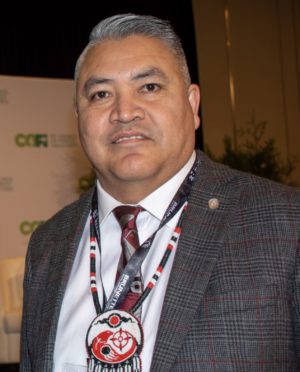
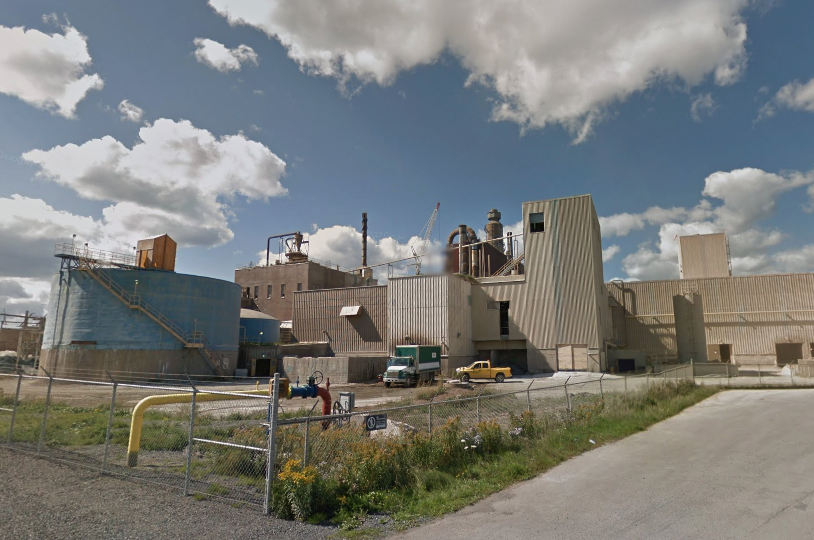 A B.C. Supreme Court justice has authorized the process that will ultimately lead to the sale of the Nova Scotia timberlands, Crown land leases and a nursery controlled by Northern Pulp. Justice Shelley Fitzpatrick approved a $104-million baseline bid for the assets by Macer Forest Holdings on Thursday. Macer’s bid, known as a stalking horse agreement, positions the Ontario-based company to pick up the …Pictou County pulp mill assets unless other interested parties come forward. If other bidders are identified by Nov. 20, an auction would be held using the stalking horse price as the starting point. …If Macer is not successful at auction, it would receive compensation of up to about $3.1 million. …Proceeds of the asset sale are to go toward Northern Pulp’s debts, including money its parent company, Paper Excellence, has lent it for the creditor protection process, the cost of winding up company pension plans and some of what is owed to the Nova Scotia government for previous loans.
A B.C. Supreme Court justice has authorized the process that will ultimately lead to the sale of the Nova Scotia timberlands, Crown land leases and a nursery controlled by Northern Pulp. Justice Shelley Fitzpatrick approved a $104-million baseline bid for the assets by Macer Forest Holdings on Thursday. Macer’s bid, known as a stalking horse agreement, positions the Ontario-based company to pick up the …Pictou County pulp mill assets unless other interested parties come forward. If other bidders are identified by Nov. 20, an auction would be held using the stalking horse price as the starting point. …If Macer is not successful at auction, it would receive compensation of up to about $3.1 million. …Proceeds of the asset sale are to go toward Northern Pulp’s debts, including money its parent company, Paper Excellence, has lent it for the creditor protection process, the cost of winding up company pension plans and some of what is owed to the Nova Scotia government for previous loans. JAFFRAY, BC — The BC Labour Relations Board has dismissed an application from unionized employees with Galloway Lumber Company seeking a court order against the employer in a labour dispute over a negotiated severance agreement due to the permanent closure of the Galloway sawmill, near Jaffray. While the labour board dismissed the application on Aug. 14, vice-chair Carmen Hamilton deferred the matter to the parties’ negotiated dispute resolution process. Meanwhile, both sides are have agreed to bring the matter before an arbitrator who is not available until January 2026. “At its heart, this matter is a contract interpretation dispute,” wrote Hamilton. The United Steelworkers Local L-405 is seeking roughly $1.2 million in severance that was negotiated as part of an adjustment plan that was negotiated following the closure of the mill.
JAFFRAY, BC — The BC Labour Relations Board has dismissed an application from unionized employees with Galloway Lumber Company seeking a court order against the employer in a labour dispute over a negotiated severance agreement due to the permanent closure of the Galloway sawmill, near Jaffray. While the labour board dismissed the application on Aug. 14, vice-chair Carmen Hamilton deferred the matter to the parties’ negotiated dispute resolution process. Meanwhile, both sides are have agreed to bring the matter before an arbitrator who is not available until January 2026. “At its heart, this matter is a contract interpretation dispute,” wrote Hamilton. The United Steelworkers Local L-405 is seeking roughly $1.2 million in severance that was negotiated as part of an adjustment plan that was negotiated following the closure of the mill.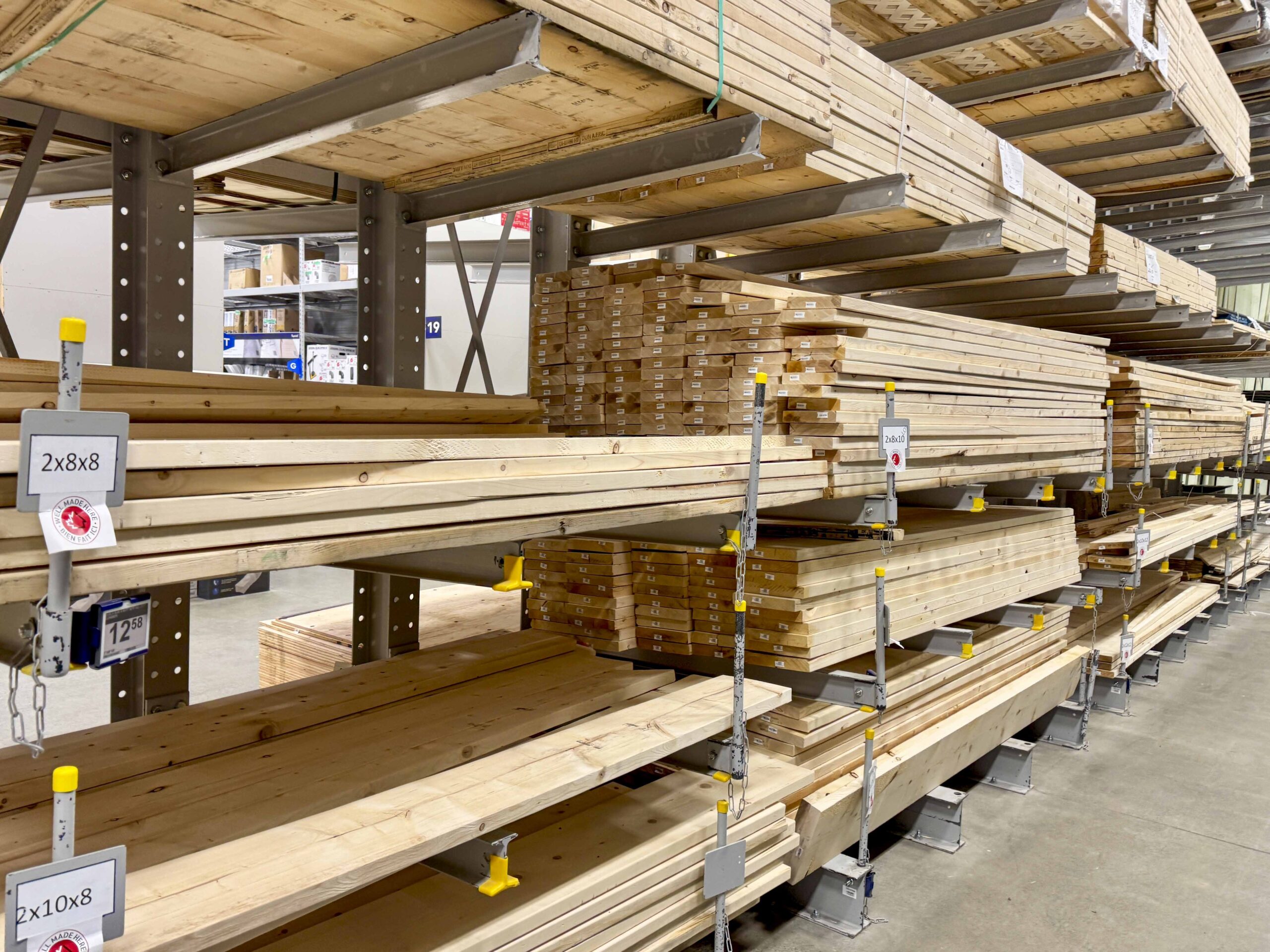 Canadian business owners are sharing growing fears that things could go from bad to worse if the U.S.-imposed trade war doesn’t end soon. New data from the Canadian Federation of Independent Business (CFIB) shows those business owners are being hit the hardest, particularly in B.C. “Two-thirds of B.C. businesses import or export directly to the United States, and when you look at those who do so indirectly, so they buy from importers or exporters, that number jumps up to 80 per cent of all businesses exposed to trade with the United States. So, that’s a huge number,” Ryan Mitton, director of Legislative Affairs in B.C. at the CFIB said. He adds that the situation appears even more grim for hard-hit industries like steel and lumber. “…one in five in BC have been impacted by softwood lumber tariffs, and that’s the highest rate of all the provinces in Canada,” he adds.
Canadian business owners are sharing growing fears that things could go from bad to worse if the U.S.-imposed trade war doesn’t end soon. New data from the Canadian Federation of Independent Business (CFIB) shows those business owners are being hit the hardest, particularly in B.C. “Two-thirds of B.C. businesses import or export directly to the United States, and when you look at those who do so indirectly, so they buy from importers or exporters, that number jumps up to 80 per cent of all businesses exposed to trade with the United States. So, that’s a huge number,” Ryan Mitton, director of Legislative Affairs in B.C. at the CFIB said. He adds that the situation appears even more grim for hard-hit industries like steel and lumber. “…one in five in BC have been impacted by softwood lumber tariffs, and that’s the highest rate of all the provinces in Canada,” he adds.

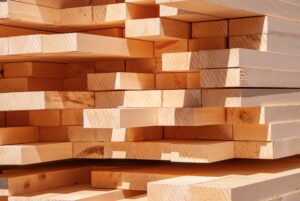 The US Court of International Trade threw out a legal challenge from Canadian softwood lumber producers J.D. Irving Ltd. granting a motion-to-dismiss from the Commerce Department. Timothy Reif said in the opinion that J.D. Irving, which had challenged Commerce’s 2022 antidumping administrate review on grounds that the agency erred by assigning a higher cash deposit rate in the order, has its proper venue under a binational panel though the USMCA now reviewing the Commerce order. While the Canadian firm said it was challenging not the Commerce fine order but the instruction for the cash deposit rate. Reif said the challenge entered on the commerce final result and thus should rest before the USMCA panel. [to access the full story, a MLex.com subscription is required]
The US Court of International Trade threw out a legal challenge from Canadian softwood lumber producers J.D. Irving Ltd. granting a motion-to-dismiss from the Commerce Department. Timothy Reif said in the opinion that J.D. Irving, which had challenged Commerce’s 2022 antidumping administrate review on grounds that the agency erred by assigning a higher cash deposit rate in the order, has its proper venue under a binational panel though the USMCA now reviewing the Commerce order. While the Canadian firm said it was challenging not the Commerce fine order but the instruction for the cash deposit rate. Reif said the challenge entered on the commerce final result and thus should rest before the USMCA panel. [to access the full story, a MLex.com subscription is required] HAMILTON — The Ontario government is delivering on its plan to protect Ontario workers by investing $70 million in expanded training and employment services for those affected by U.S. tariffs and policies. This funding includes support for the province’s
HAMILTON — The Ontario government is delivering on its plan to protect Ontario workers by investing $70 million in expanded training and employment services for those affected by U.S. tariffs and policies. This funding includes support for the province’s 
 The United States is the top wood-importing country. Trade issues and tariffs could be a significant factor in determining the path of least resistance for lumber, lumber futures, and wood product prices over the coming weeks and months. …The offseason for lumber demand is on the horizon. The potential for increased price variance due to the uncertainty created by U.S.-Canada trade relations remains high, and the path of least resistance of U.S. short-term interest rates is likely to be lower. Time will tell if longer-term rates follow any Fed Rate cuts over the coming months. Lumber remains a critical construction material, and the current price levels offer a positive risk-reward profile. Accumulating lumber-related assets on a scale-down basis during periods of price weakness over the coming weeks and months could be optimal for 2026, provided the housing market improves and lumber demand rises.
The United States is the top wood-importing country. Trade issues and tariffs could be a significant factor in determining the path of least resistance for lumber, lumber futures, and wood product prices over the coming weeks and months. …The offseason for lumber demand is on the horizon. The potential for increased price variance due to the uncertainty created by U.S.-Canada trade relations remains high, and the path of least resistance of U.S. short-term interest rates is likely to be lower. Time will tell if longer-term rates follow any Fed Rate cuts over the coming months. Lumber remains a critical construction material, and the current price levels offer a positive risk-reward profile. Accumulating lumber-related assets on a scale-down basis during periods of price weakness over the coming weeks and months could be optimal for 2026, provided the housing market improves and lumber demand rises. 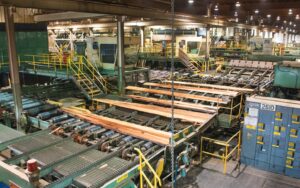 Lumber buyers placed unsuccessful bets on tariffs and interest rates Lumber prices have dropped by more than 14% from a record high in early August. Many home builders, contractors and retailers wagered that higher U.S. tariffs on imports would boost the cost of lumber, while lower interest rates would lift demand for the building material. But those bets have failed to pay off – and lumber prices have tallied a steep decline from a record high reached only three weeks ago. That price decline could lead to a drop in production at a time when home-building and housing demand starts to heat up. The demand component for spring 2025 was a “complete swing and a miss,” said Greg Kuta, at lumber broker Westline Capital Strategies. …On Tuesday, lumber futures for September delivery settled at $595.50 per thousand board feet. …Canadian mills are losing out with lumber prices well under the cost of production,” Kuta said.
Lumber buyers placed unsuccessful bets on tariffs and interest rates Lumber prices have dropped by more than 14% from a record high in early August. Many home builders, contractors and retailers wagered that higher U.S. tariffs on imports would boost the cost of lumber, while lower interest rates would lift demand for the building material. But those bets have failed to pay off – and lumber prices have tallied a steep decline from a record high reached only three weeks ago. That price decline could lead to a drop in production at a time when home-building and housing demand starts to heat up. The demand component for spring 2025 was a “complete swing and a miss,” said Greg Kuta, at lumber broker Westline Capital Strategies. …On Tuesday, lumber futures for September delivery settled at $595.50 per thousand board feet. …Canadian mills are losing out with lumber prices well under the cost of production,” Kuta said.
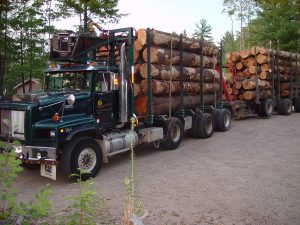 Canada’s forests are burning. …Smoke from these fires has degraded air quality across Canada and the US. The situation has led some US policymakers to publicly blame Canada for failing to manage wildfires and to demand more active forest management. These critiques are hypocritical, given their record of climate change denial. …Yet beyond partisan politics, the US continues to impose tariffs on Canadian lumber, undermining our capacity to invest in stronger forest management. …Eliminating or reducing US tariffs would instantly raise the value of Canada’s standing forest stock, sending a price signal that makes forestry activity viable in regions that are currently too remote or costly to harvest. At the margin, higher returns would unlock investment in better forest management, including areas that are now left untouched because they are uneconomic to service. …Lifting tariffs would be the first step, but it would not be a cure-all.
Canada’s forests are burning. …Smoke from these fires has degraded air quality across Canada and the US. The situation has led some US policymakers to publicly blame Canada for failing to manage wildfires and to demand more active forest management. These critiques are hypocritical, given their record of climate change denial. …Yet beyond partisan politics, the US continues to impose tariffs on Canadian lumber, undermining our capacity to invest in stronger forest management. …Eliminating or reducing US tariffs would instantly raise the value of Canada’s standing forest stock, sending a price signal that makes forestry activity viable in regions that are currently too remote or costly to harvest. At the margin, higher returns would unlock investment in better forest management, including areas that are now left untouched because they are uneconomic to service. …Lifting tariffs would be the first step, but it would not be a cure-all. 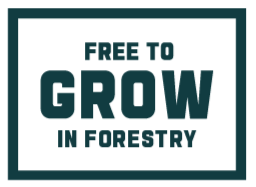
 …calls are growing for Canada to change how it prepares for, reacts and responds to the natural disasters. Experts say Ottawa needs to rethink how it deals with wildfires… Ken McMullen, the president of the Canadian Association of Fire Chiefs, which represents municipal firefighters, has been calling for the creation of a national fire administration. …When asked by CBC News if the federal government will create a new entity or program to improve wildfire response, federal Emergency Management Minister Eleanor Olszewski said it is one idea under consideration. …While suppression is critical, Yolanda Clatworthy, the interim director of the Mitigating Wildfire Initiative, argues that it does not address the root cause of the wildfire crisis. …She said mitigation and prevention work can include choosing where homes are built, how communities are protected, how forests are managed, as well as supporting Indigenous fire stewardship and moving away from fossil fuel expansion.
…calls are growing for Canada to change how it prepares for, reacts and responds to the natural disasters. Experts say Ottawa needs to rethink how it deals with wildfires… Ken McMullen, the president of the Canadian Association of Fire Chiefs, which represents municipal firefighters, has been calling for the creation of a national fire administration. …When asked by CBC News if the federal government will create a new entity or program to improve wildfire response, federal Emergency Management Minister Eleanor Olszewski said it is one idea under consideration. …While suppression is critical, Yolanda Clatworthy, the interim director of the Mitigating Wildfire Initiative, argues that it does not address the root cause of the wildfire crisis. …She said mitigation and prevention work can include choosing where homes are built, how communities are protected, how forests are managed, as well as supporting Indigenous fire stewardship and moving away from fossil fuel expansion. In the Summer Almanac you’ll find these headlines and much more:
In the Summer Almanac you’ll find these headlines and much more:
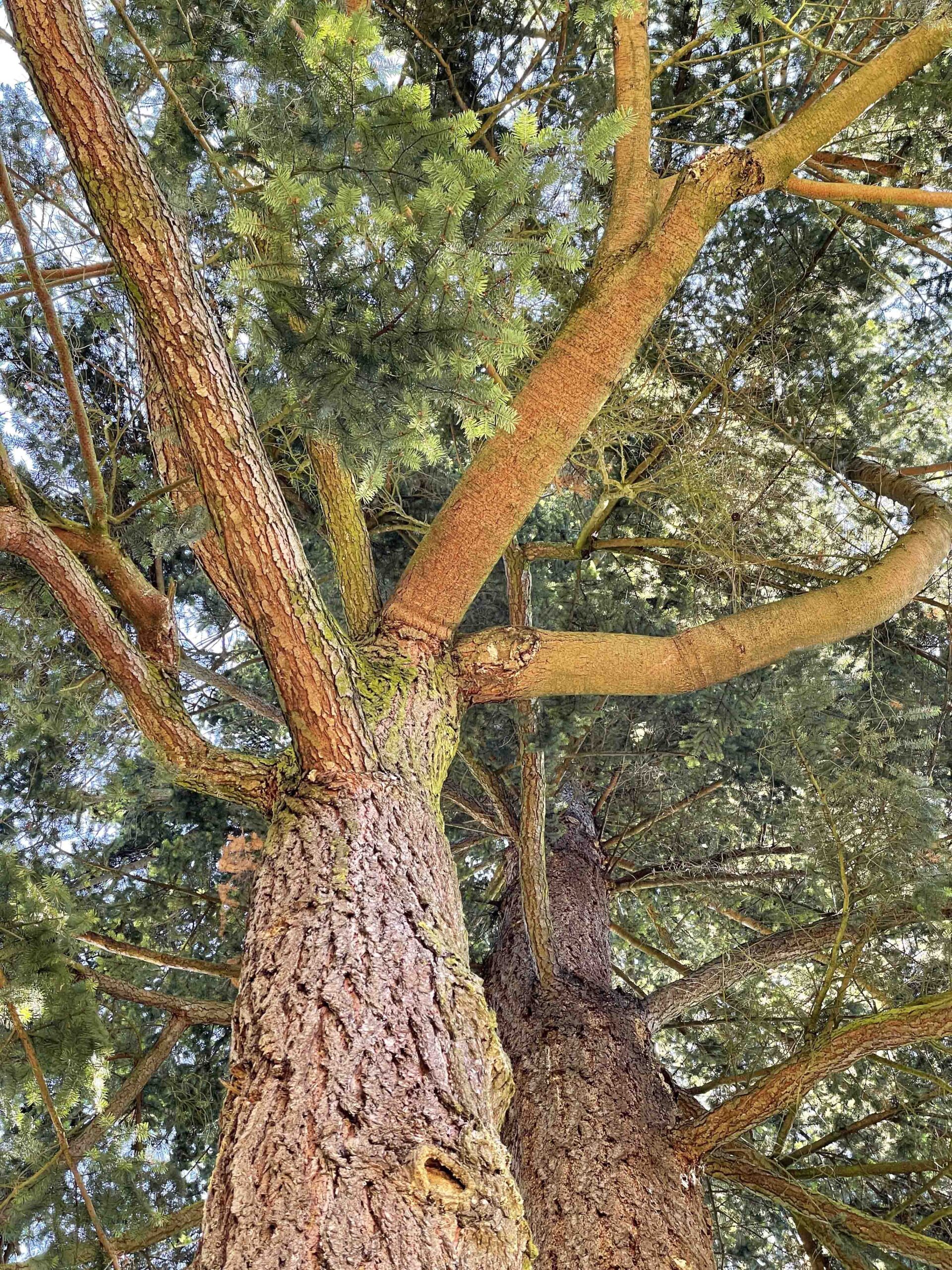 Peter Constabel, a professor in the biology department at the University of Victoria said that several years of repeated drought in B.C. mixed with heat stress has increased the likelihood of branches breaking off, it could even happen on a “perfectly calm day” without any breeze. The consequences can be tragic. Constabel, who specializes in tree health said, “it’s the drought that specifically causes this, and somehow it stresses the tree and drops the branch, or the branch falls. If you get cumulative droughts, of course, it weakens the tree overall”. …Dry spells can leave trees in a weakened state, Simon Fraser University biological sciences professor Jim Mattsson said, reducing photosynthesis and growth, cutting their energy or sugar reserves, and lowering production of chemical defences. All of these can cause a chain reaction increasing trees’ susceptibility to insects and fungal diseases, causing trees to rot inside, weaken and potentially topple over.
Peter Constabel, a professor in the biology department at the University of Victoria said that several years of repeated drought in B.C. mixed with heat stress has increased the likelihood of branches breaking off, it could even happen on a “perfectly calm day” without any breeze. The consequences can be tragic. Constabel, who specializes in tree health said, “it’s the drought that specifically causes this, and somehow it stresses the tree and drops the branch, or the branch falls. If you get cumulative droughts, of course, it weakens the tree overall”. …Dry spells can leave trees in a weakened state, Simon Fraser University biological sciences professor Jim Mattsson said, reducing photosynthesis and growth, cutting their energy or sugar reserves, and lowering production of chemical defences. All of these can cause a chain reaction increasing trees’ susceptibility to insects and fungal diseases, causing trees to rot inside, weaken and potentially topple over.

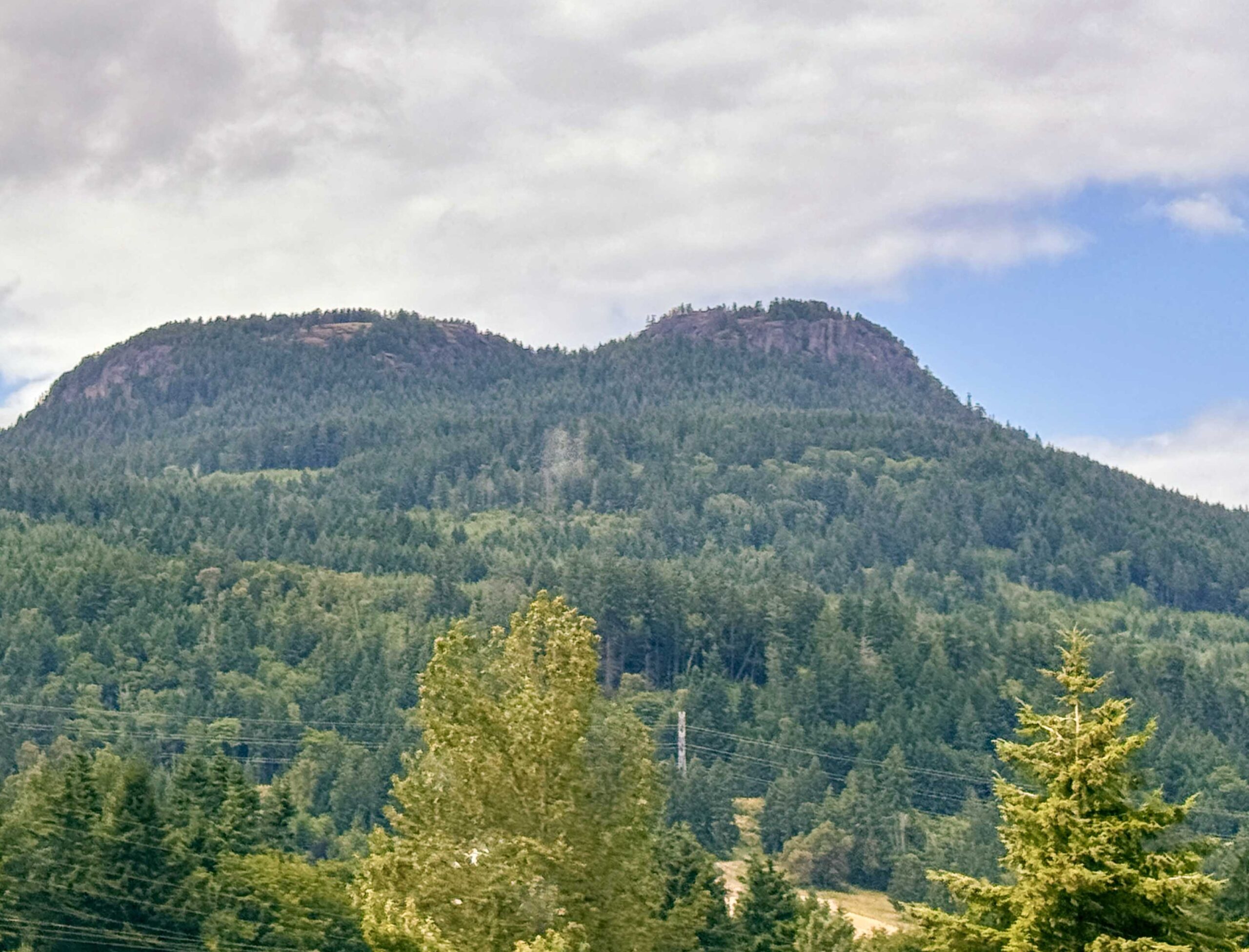 The Cowichan Valley Citizen has published two letters to the editor referencing the North Cowichan Municipal Forest Reserve
The Cowichan Valley Citizen has published two letters to the editor referencing the North Cowichan Municipal Forest Reserve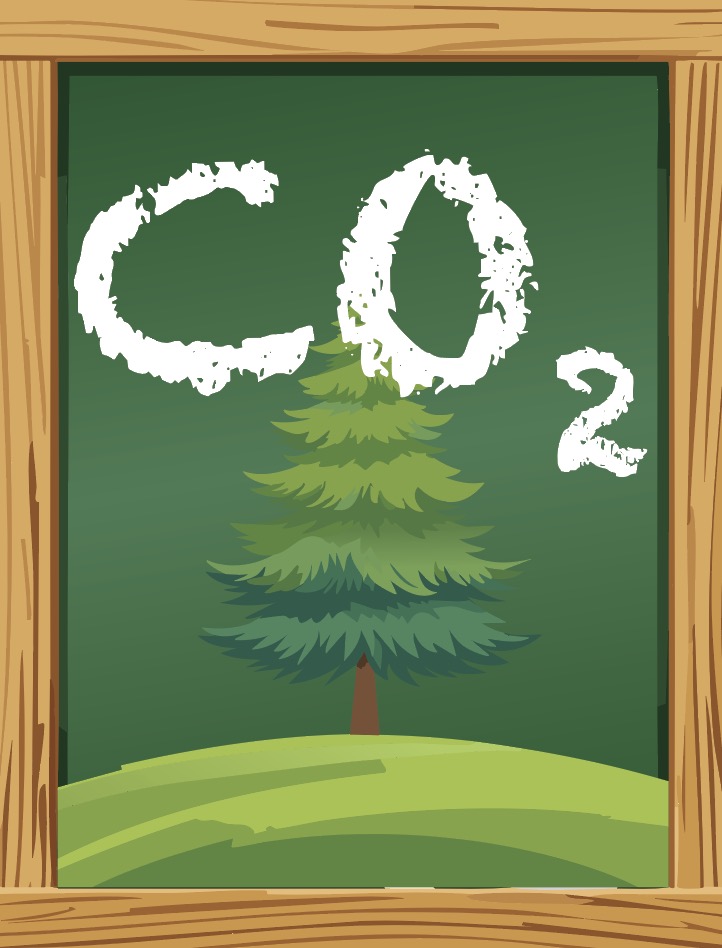 Global warming is predicted to drive one of the greatest declines in caribou populations in the last 21,000 years, with British Columbia’s herds expected to see declines of up to 61 per cent by 2100 if high rates of warming go unchecked, a new study says. Caribou — also known as reindeer in Europe and Asia — have survived several spells of Arctic warming in the past. Their presence across the planet’s tundra, forests and mountains have long supported Indigenous populations while acting as ecosystem engineers, disturbing the soil and trampling vegetation in a way that promotes new plant growth. …Human disturbance of those landscapes — from logging to road building — has already led to a two-thirds decline in the global population over the past 30 years. New
Global warming is predicted to drive one of the greatest declines in caribou populations in the last 21,000 years, with British Columbia’s herds expected to see declines of up to 61 per cent by 2100 if high rates of warming go unchecked, a new study says. Caribou — also known as reindeer in Europe and Asia — have survived several spells of Arctic warming in the past. Their presence across the planet’s tundra, forests and mountains have long supported Indigenous populations while acting as ecosystem engineers, disturbing the soil and trampling vegetation in a way that promotes new plant growth. …Human disturbance of those landscapes — from logging to road building — has already led to a two-thirds decline in the global population over the past 30 years. New  The Mount Underwood fire near Port Alberni wasn’t your typical Vancouver Island blaze. But what is normal is changing. Thanks to droughts and heat waves, tiny fires that crews were once able to extinguish in a matter of hours are now ballooning into major blazes. Historically, fires have been nearly non-existent in coastal B.C., and the playbook for putting them out has been simple: Find fire. Spray water on it. Dig up hot spots. Case closed. This “direct attack” was possible because of the slow speed at which fires grow in coastal ecosystems. But the Mount Underwood fire, which ignited along the road connecting Port Alberni to Bamfield, spread rapidly, burning as a Rank 5 fire, with flames rising into the crowns of trees and up the mountainside. “In the seven years I’ve worked for the Coastal Fire Centre, I don’t think I’ve seen a fire like this on Vancouver Island,” Julia Caranci told CBC.
The Mount Underwood fire near Port Alberni wasn’t your typical Vancouver Island blaze. But what is normal is changing. Thanks to droughts and heat waves, tiny fires that crews were once able to extinguish in a matter of hours are now ballooning into major blazes. Historically, fires have been nearly non-existent in coastal B.C., and the playbook for putting them out has been simple: Find fire. Spray water on it. Dig up hot spots. Case closed. This “direct attack” was possible because of the slow speed at which fires grow in coastal ecosystems. But the Mount Underwood fire, which ignited along the road connecting Port Alberni to Bamfield, spread rapidly, burning as a Rank 5 fire, with flames rising into the crowns of trees and up the mountainside. “In the seven years I’ve worked for the Coastal Fire Centre, I don’t think I’ve seen a fire like this on Vancouver Island,” Julia Caranci told CBC.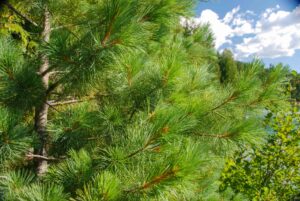 Over 70,000 new trees have been planted in Narrow Hills Provincial Park after the destructive Shoe Fire ripped through the area in May. The park, about 130 kilometres northeast of Prince Albert, Sask., is home to Gem Lakes and Lost Echo campgrounds, which remained closed for the season due to the wildfire. “There was a lot of enthusiasm to get the new life going back in the forest,” Pat MacKasey, a provincial park forest ecologist. MacKasey has been the supervisor of a five-person crew who have planted 73,080 Jack pine and white spruce trees since July. Trees have been planted in an area in Pine Lake that had previously been wiped out by a windstorm in the 1990s, he said. MacKasey says regrowth after that storm was slow, but new trees were eventually planted again in 2002 once forest health improved.
Over 70,000 new trees have been planted in Narrow Hills Provincial Park after the destructive Shoe Fire ripped through the area in May. The park, about 130 kilometres northeast of Prince Albert, Sask., is home to Gem Lakes and Lost Echo campgrounds, which remained closed for the season due to the wildfire. “There was a lot of enthusiasm to get the new life going back in the forest,” Pat MacKasey, a provincial park forest ecologist. MacKasey has been the supervisor of a five-person crew who have planted 73,080 Jack pine and white spruce trees since July. Trees have been planted in an area in Pine Lake that had previously been wiped out by a windstorm in the 1990s, he said. MacKasey says regrowth after that storm was slow, but new trees were eventually planted again in 2002 once forest health improved. The number and severity of wildfire damage claims are increasing partly because fire seasons are longer with more hectares burned, according to IBC spokesperson Adam Sutherland. “As we see the frequency and severity of claims growing, that’s putting pressure on premiums. “We know the risk is only going to grow. Insurance puts a price on risk. That’s why it’s paramount that we do much, much more as a society to reduce that, to better fireproof our communities and better protect our homes.” He said in addition to government action to reduce fire danger in the forests, residents need more incentives to protect their properties. “But then we also need to rethink our building codes and how we are developing our communities in the first place. That means moving away from wood shingles, wood roofs. No more vinyl siding. We need non-combustible materials on homes and interface fire zones for all new development.”
The number and severity of wildfire damage claims are increasing partly because fire seasons are longer with more hectares burned, according to IBC spokesperson Adam Sutherland. “As we see the frequency and severity of claims growing, that’s putting pressure on premiums. “We know the risk is only going to grow. Insurance puts a price on risk. That’s why it’s paramount that we do much, much more as a society to reduce that, to better fireproof our communities and better protect our homes.” He said in addition to government action to reduce fire danger in the forests, residents need more incentives to protect their properties. “But then we also need to rethink our building codes and how we are developing our communities in the first place. That means moving away from wood shingles, wood roofs. No more vinyl siding. We need non-combustible materials on homes and interface fire zones for all new development.”
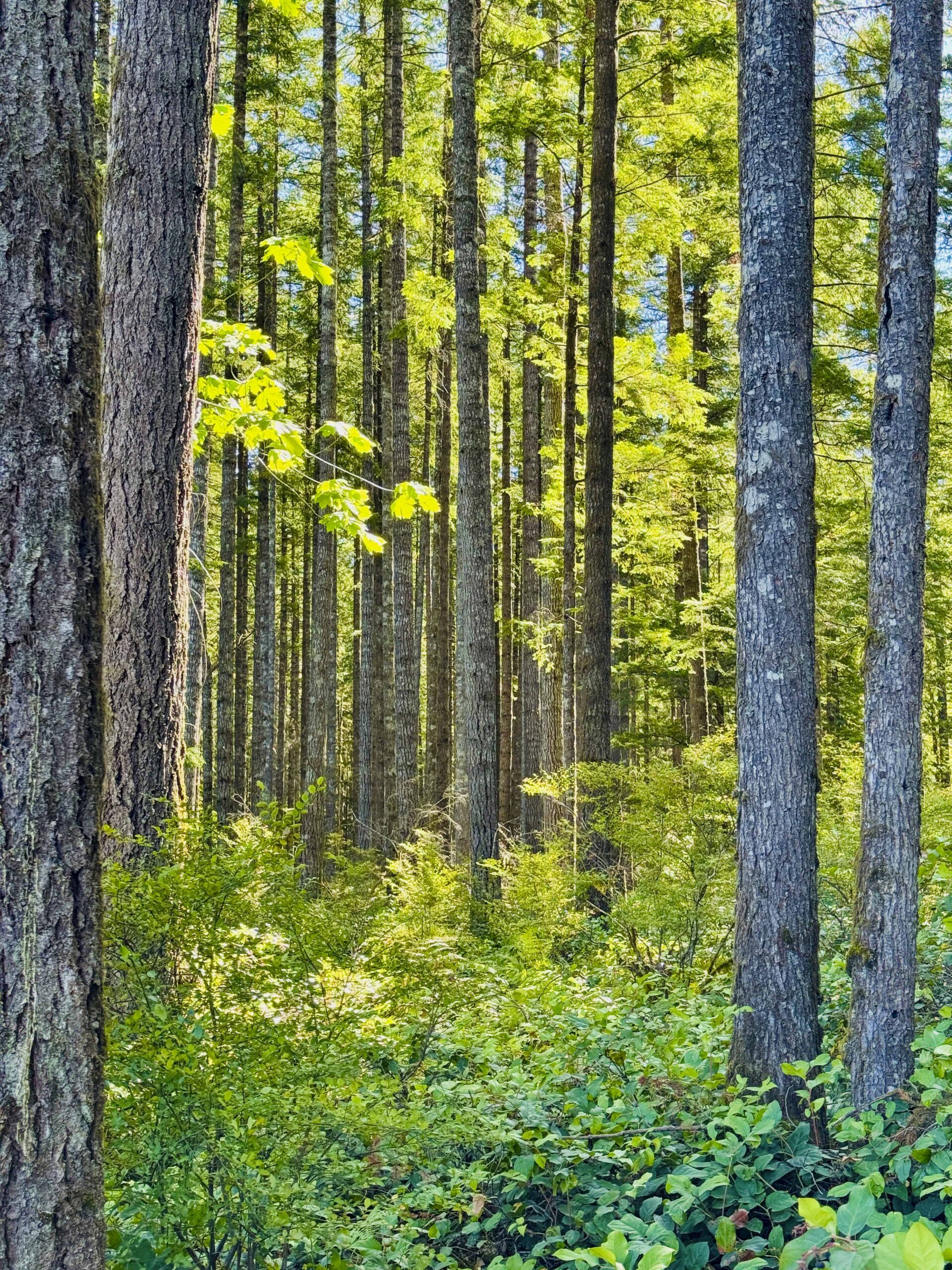 Interfor says it won’t proceed with its plan to spray forests in northern Ontario with a herbicide critics say is harmful. While the province said it was safe, First Nations and some municipalities were opposed to the plan to spray glyphosate over Crown land near Elliot Lake, Blind River, Espanola and other forest management areas in the north. Andrew Horahan, executive vice-president of Interfor’s Canadian operations, confirmed it won’t be conducting the aerial spray of the herbicide, at least for now. “Interfor is committed to responsible forest management and to maintaining open, constructive dialogue with our stakeholders and the communities in which we operate,” Horahan said in a statement. “The use of herbicide sprays is a carefully regulated and widely accepted industry practice, overseen by relevant authorities. For 2025, Interfor has chosen not to proceed with an herbicide application in the Pineland, Spanish and Northshore forests.”
Interfor says it won’t proceed with its plan to spray forests in northern Ontario with a herbicide critics say is harmful. While the province said it was safe, First Nations and some municipalities were opposed to the plan to spray glyphosate over Crown land near Elliot Lake, Blind River, Espanola and other forest management areas in the north. Andrew Horahan, executive vice-president of Interfor’s Canadian operations, confirmed it won’t be conducting the aerial spray of the herbicide, at least for now. “Interfor is committed to responsible forest management and to maintaining open, constructive dialogue with our stakeholders and the communities in which we operate,” Horahan said in a statement. “The use of herbicide sprays is a carefully regulated and widely accepted industry practice, overseen by relevant authorities. For 2025, Interfor has chosen not to proceed with an herbicide application in the Pineland, Spanish and Northshore forests.”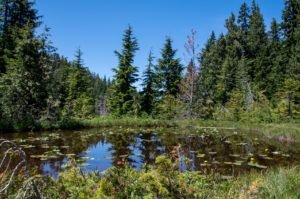 Trees are valuable components of the Canadian ecosystem and natural instruments of carbon storage and sequestration. A tree’s growth is controlled by regional climate, including growing season length and air temperature. It is also impacted by local hydroclimate; water and temperature variations that occur on a smaller scale. Black spruce trees are common within the boreal landscape of North America, including within fen wetlands. There is limited research on black spruce growth in fens, and how the unique hydroclimate of fens may impact tree growth in a changing climate. Tree core and ring samples were collected from both sites and placed within a microscope slide scanner. This allowed key tree growth characteristics to be identified on a cellular level. Correlation analysis was conducted between these growth characteristics and long-term climate data to determine the relationship between the two variables.
Trees are valuable components of the Canadian ecosystem and natural instruments of carbon storage and sequestration. A tree’s growth is controlled by regional climate, including growing season length and air temperature. It is also impacted by local hydroclimate; water and temperature variations that occur on a smaller scale. Black spruce trees are common within the boreal landscape of North America, including within fen wetlands. There is limited research on black spruce growth in fens, and how the unique hydroclimate of fens may impact tree growth in a changing climate. Tree core and ring samples were collected from both sites and placed within a microscope slide scanner. This allowed key tree growth characteristics to be identified on a cellular level. Correlation analysis was conducted between these growth characteristics and long-term climate data to determine the relationship between the two variables.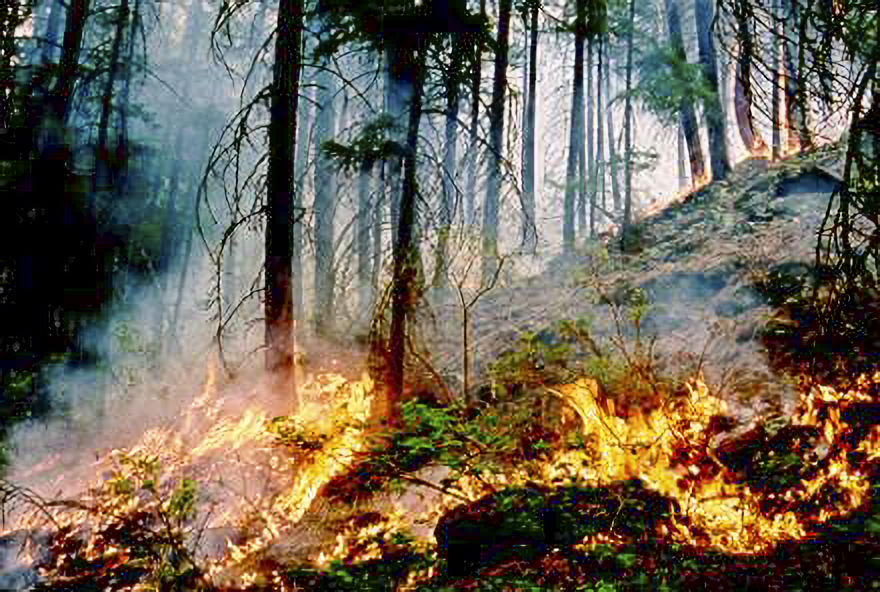 The historic wildfires that ripped through Quebec in 2023, destroying millions of hectares of forest and impacting thousands of people, is estimated to have cost over $8 billion. That’s according to a new provincially funded study published Wednesday by Nada Conseils — a climate action consultancy firm — highlighting the impacts and collective costs of the fires on citizens, governments, businesses and ecosystems. According to SOPFEU, the agency responsible for wildfire prevention and suppression in Quebec, the 2023 wildfire season was the worst in over 100 years with 713 fires — 99.9 per cent of which were caused by lightening — burning 4.3 million hectares of forest. …For governments, much of the costs incurred stemmed from firefighting operations, emergency services including evacuations and housing evacuees, and financial assistance programs. …The report notes that some of the most significant costs for citizens were linked to property damage, as well as financial impacts related to lost income and increased expenses.
The historic wildfires that ripped through Quebec in 2023, destroying millions of hectares of forest and impacting thousands of people, is estimated to have cost over $8 billion. That’s according to a new provincially funded study published Wednesday by Nada Conseils — a climate action consultancy firm — highlighting the impacts and collective costs of the fires on citizens, governments, businesses and ecosystems. According to SOPFEU, the agency responsible for wildfire prevention and suppression in Quebec, the 2023 wildfire season was the worst in over 100 years with 713 fires — 99.9 per cent of which were caused by lightening — burning 4.3 million hectares of forest. …For governments, much of the costs incurred stemmed from firefighting operations, emergency services including evacuations and housing evacuees, and financial assistance programs. …The report notes that some of the most significant costs for citizens were linked to property damage, as well as financial impacts related to lost income and increased expenses.
 The Province of B.C. is lending its expertise to Mosaic Forest Management as it develops plans to reopen the Bamfield Main Road, sections of which were rendered unsafe due to the Mt. Underwood wildfire. “We recognize the importance of Bamfield Road to the Huu‑ay‑aht First Nation and area residents,” said Mike Farnworth, Minister of Transportation and Transit. “There is substantial work necessary … to reopen Bamfield Road. Ensuring the safety of the travelling public is the top priority, and the Province will continue to support to Mosaic throughout this process.” Initial engineering assessments have determined a section of the Bamfield Road managed by Mosaic is unsafe for all traffic, prompting Mosaic to close the route with a section of the road being defined as a No Work Zone by BC Wildfire Services. Falling rocks, dangerous trees and a fire-damaged slope are presenting exceptionally challenging conditions, and there is no timeline for reopening the road in its current configuration.
The Province of B.C. is lending its expertise to Mosaic Forest Management as it develops plans to reopen the Bamfield Main Road, sections of which were rendered unsafe due to the Mt. Underwood wildfire. “We recognize the importance of Bamfield Road to the Huu‑ay‑aht First Nation and area residents,” said Mike Farnworth, Minister of Transportation and Transit. “There is substantial work necessary … to reopen Bamfield Road. Ensuring the safety of the travelling public is the top priority, and the Province will continue to support to Mosaic throughout this process.” Initial engineering assessments have determined a section of the Bamfield Road managed by Mosaic is unsafe for all traffic, prompting Mosaic to close the route with a section of the road being defined as a No Work Zone by BC Wildfire Services. Falling rocks, dangerous trees and a fire-damaged slope are presenting exceptionally challenging conditions, and there is no timeline for reopening the road in its current configuration. Don’t miss the August WorkSafeBC Health and Safety News:
Don’t miss the August WorkSafeBC Health and Safety News: The Occupational Health and Safety Regulation provides that, except as otherwise determined by WorkSafeBC, an employer must ensure no worker is exposed to a substance exceeding the Threshold Limit Values (TLVs) prescribed by the
The Occupational Health and Safety Regulation provides that, except as otherwise determined by WorkSafeBC, an employer must ensure no worker is exposed to a substance exceeding the Threshold Limit Values (TLVs) prescribed by the 

